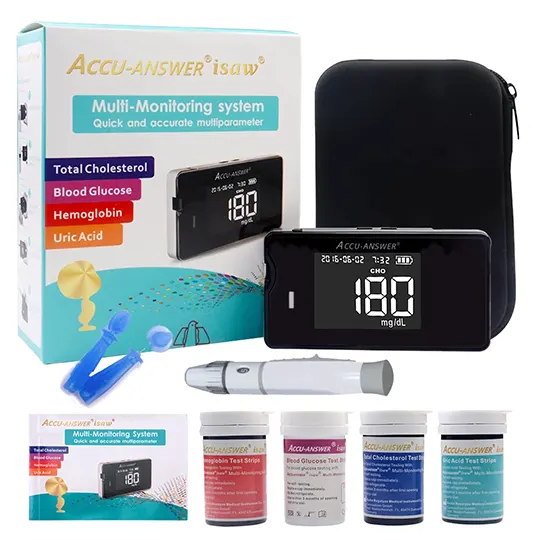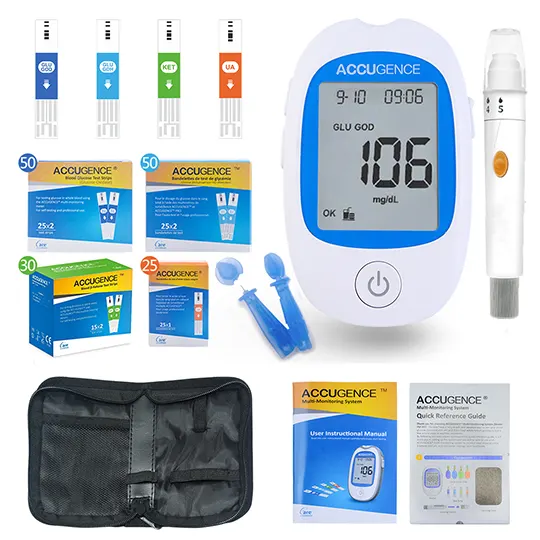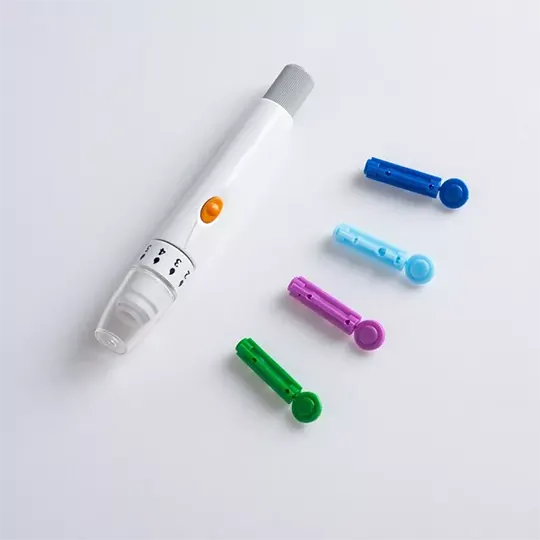Transamine
Transamine - General Information
A propylamine formed from the cyclization of the side chain of amphetamine. This monoamine oxidase inhibitor is effective in the treatment of major depression, dysthymic disorder, and atypical depression. It also is useful in panic and phobic disorders. (From AMA Drug Evaluations Annual, 1994, p311)
Pharmacology of Transamine
Transamine belongs to a class of antidepressants called monoamine oxidase inhibitors (MAOIs). Transamine is a non-hydrazine monoamine oxidase inhibitor with a rapid onset of activity. It increases the concentration of epinephrine, norepinephrine, and serotonin in storage sites throughout the nervous system and, in theory, this increased concentration of monoamines in the brain stem is the basis for its antidepressant activity.
Transamine for patients
Prescribers or other health professionals should inform patients, their families, and their caregivers about the benefits and risks associated with treatment with PARNATE and should counsel them in its appropriate use. A patient Medication Guide About Using Antidepressants in Children and Teenagers is available for Parnate. The prescriber or health professional should instruct patients, their families, and their caregivers to read the Medication Guide and should assist them in understanding its contents. Patients should be given the opportunity to discuss the contents of the Medication Guide and to obtain answers to any questions they may have. The complete text of the Medication Guide is reprinted at the end of this document.
Patients should be advised of the following issues and asked to alert their prescriber if these occur while taking Parnate.
Medication Guide
PARNATE® (PAR-nate) (tranylcypromine sulfate) Tablets
About Using Antidepressants in Children and Teenagers
What is the most important information I should know if my child is being prescribed an antidepressant?
Parents or guardians need to think about 4 important things when their child is prescribed an antidepressant:
- There is a risk of suicidal thoughts or actions
- How to try to prevent suicidal thoughts or actions in your child
- You should watch for certain signs if your child is taking an antidepressant
- There are benefits and risks when using antidepressants
1. There is a Risk of Suicidal Thoughts or Actions
Children and teenagers sometimes think about suicide, and many report trying to kill themselves.
Antidepressants increase suicidal thoughts and actions in some children and teenagers. But suicidal thoughts and actions can also be caused by depression, a serious medical condition that is commonly treated with antidepressants. Thinking about killing yourself or trying to kill yourself is called suicidality or being suicidal.
A large study combined the results of 24 different studies of children and teenagers with depression or other illnesses. In these studies, patients took either a placebo (sugar pill) or an antidepressant for 1 to 4 months. No one committed suicide in these studies, but some patients became suicidal. On sugar pills, 2 out of every 100 became suicidal. On the antidepressants, 4 out of every 100 patients became suicidal.
For some children and teenagers, the risks of suicidal actions may be especially high. These include patients with
- Bipolar illness (sometimes called manic-depressive illness)
- A family history of bipolar illness
- A personal or family history of attempting suicide
If any of these are present, make sure you tell your healthcare provider before your child takes an antidepressant.
2. How to Try to Prevent Suicidal Thoughts and Actions
To try to prevent suicidal thoughts and actions in your child, pay close attention to changes in her or his moods or actions, especially if the changes occur suddenly. Other important people in your child's life can help by paying attention as well (e.g., your child, brothers and sisters, teachers, and other important people). The changes to look out for are listed in Section 3, on what to watch for.
Whenever an antidepressant is started or its dose is changed, pay close attention to your child.
After starting an antidepressant, your child should generally see his or her healthcare provider:
- Once a week for the first 4 weeks
- Every 2 weeks for the next 4 weeks
- After taking the antidepressant for 12 weeks
- After 12 weeks, follow your healthcare provider's advice about how often to come back
- More often if problems or questions arise
You should call your child's healthcare provider between visits if needed.
3. You Should Watch for Certain Signs If Your Child is Taking an Antidepressant
Contact your child's healthcare provider right away if your child exhibits any of the following signs for the first time, or if they seem worse, or worry you, your child, or your child's teacher:
- Thoughts about suicide or dying
- Attempts to commit suicide
- New or worse depression
- New or worse anxiety
- Feeling very agitated or restless
- Panic attacks
- Difficulty sleeping (insomnia)
- New or worse irritability
- Acting aggressive, being angry, or violent
- Acting on dangerous impulses
- An extreme increase in activity and talking
- Other unusual changes in behavior or mood
Never let your child stop taking an antidepressant without first talking to his or her healthcare provider. Stopping an antidepressant suddenly can cause other symptoms.
4. There are Benefits and Risks When Using Antidepressants
Antidepressants are used to treat depression and other illnesses. Depression and other illnesses can lead to suicide. In some children and teenagers, treatment with an antidepressant increases suicidal thinking or actions. It is important to discuss all the risks of treating depression and also the risks of not treating it. You and your child should discuss all treatment choices with your healthcare provider, not just the use of antidepressants.
Other side effects can occur with antidepressants.
Of all the antidepressants, only fluoxetine (Prozac®) has been FDA approved to treat pediatric depression.
For obsessive compulsive disorder in children and teenagers, FDA has approved only fluoxetine (Prozac®)*, sertraline (Zoloft®)*, fluvoxamine, and clomipramine (Anafranil®)*.
Your healthcare provider may suggest other antidepressants based on the past experience of your child or other family members.
Is this all I need to know if my child is being prescribed an antidepressant?
No. This is a warning about the risk for suicidality. Other side effects can occur with antidepressants. Be sure to ask your healthcare provider to explain all the side effects of the particular drug he or she is prescribing. Also ask about drugs to avoid when taking an antidepressant. Ask your healthcare provider or pharmacist where to find more information.
*The following are registered trademarks of their respective manufacturers: Prozac®/Eli Lilly and Company; Zoloft®/Pfizer Pharmaceuticals; Anafranil®/Mallinckrodt Inc.
This Medication Guide has been approved by the U.S. Food and Drug Administration for all antidepressants.
GlaxoSmithKline
Research Triangle Park, NC 27709
©2005, GlaxoSmithKline. All rights reserved.
January 2005
Transamine Interactions
No Information Provided.
Transamine Contraindications
Parnate (tranylcypromine sulfate) should not be administered in combination with any of the following: MAO inhibitors or dibenzazepine derivatives; sympathomimetics (including amphetamines); some central nervous system depressants (including narcotics and alcohol); anti-hypertensive, diuretic, antihistaminic, sedative or anesthetic drugs; bupropion HCl; buspirone HCl; dextromethorphan; cheese or other foods with a high tyramine content; or excessive quantities of caffeine.
Parnate (tranylcypromine sulfate) should not be administered to any patient with a confirmed or suspected cerebrovascular defect or to any patient with cardiovascular disease, hypertension or history of headache.
(For complete discussion of contraindications and warnings, see below.)
CONTRAINDICATIONS
Parnate (tranylcypromine sulfate) is contraindicated:
- In patients with cerebrovascular defects or cardiovascular disorders
PARNATE should not be administered to any patient with a confirmed or suspected cerebrovascular defect or to any patient with cardiovascular disease or hypertension. - In the presence of pheochromocytoma
PARNATE should not be used in the presence of pheochromocytoma since such tumors secrete pressor substances. - In combination with MAO inhibitors or with dibenzazepine-related entities
Parnate (tranylcypromine sulfate) should not be administered together or in rapid succession with other MAO inhibitors or with dibenzazepine-related entities. Hypertensive crises or severe convulsive seizures may occur in patients receiving such combinations.
In patients being transferred to PARNATE from another MAO inhibitor or from a dibenzazepine-related entity, allow a medication-free interval of at least a week, then initiate PARNATE using half the normal starting dosage for at least the first week of therapy. Similarly, at least a week should elapse between the discontinuance of PARNATE and the administration of another MAO inhibitor or a dibenzazepine-related entity, or the readministration of PARNATE .
The following list includes some other MAO inhibitors, dibenzazepine-related entities and tricyclic antidepressants, and the companies which market them.
-
Other MAO Inhibitors Generic Name Source Furazolidone Isocarboxazid Marplan® (Oxford Pharm Services) Pargyline HCl Pargyline HCl and methyclothiazide Phenelzine sulfate Nardil® (Parke-Davis) Procarbazine HCl Matulane® (Sigma Tau) Dibenzazepine-Related and Other Tricyclics Generic Name Source Amitriptyline HCl Elavil® (Zeneca) Perphenazine and amitriptyline HCl Etrafon® (Schering)
Triavil® (Lotus Biochemical)Clomipramine hydrochloride Anafranil® (Geneva) Desipramine HCl Norpramin® (Aventis) Imipramine HCl JanimineTM (Geneva)
Tofranil® (Novartis)
(Geneva)Nortriptyline HCl Pamelor® (Mallinckrodt) Protriptyline HCl Vivactil® (Merck & Co., Inc.) Doxepin HCl Sinequan® (Pfizer) Carbamazepine Tegretol® (Novartis) Cyclobenzaprine HCl Flexeril® (Merck & Co., Inc.) Amoxapine (Geneva) Maprotiline HCl (Mylan) Trimipramine maleate Surmontil® (Wyeth-Ayerst Pharmaceuticals)
- In combination with bupropion
The concurrent administration of a MAO inhibitor and bupropion hydrochloride (Wellbutrin®, Wellbutrin SR®, Zyban®, GlaxoSmithKline) is contraindicated. At least 14 days should elapse between discontinuation of a MAO inhibitor and initiation of treatment with bupropion hydrochloride. - In combination with dexfenfluramine hydrochloride
Because Redux (dexfenfluramine hydrochloride, Wyeth) is a serotonin releaser and reuptake inhibitor, it should not be used concomitantly with Parnate (tranylcypromine sulfate). - In combination with selective serotonin reuptake inhibitors (SSRIs)
As a general rule, PARNATE should not be administered in combination with any SSRI. There have been reports of serious, sometimes fatal, reactions (including hyperthermia, rigidity, myoclonus, autonomic instability with possible rapid fluctuations of vital signs, and mental status changes that include extreme agitation progressing to delirium and coma) in patients receiving fluoxetine (Prozac®, Lilly) in combination with a monoamine oxidase inhibitor (MAOI), and in patients who have recently discontinued fluoxetine and are then started on a MAOI. Some cases presented with features resembling neuroleptic malignant syndrome. Therefore, fluoxetine and other SSRIs should not be used in combination with a MAOI, or within 14 days of discontinuing therapy with a MAOI. Since fluoxetine and its major metabolite have very long elimination half-lives, at least 5 weeks should be allowed after stopping fluoxetine before starting a MAOI.
At least 2 weeks should be allowed after stopping sertraline (Zoloft®, Roerig) or paroxetine (Paxil®, SmithKline Beecham Pharmaceuticals) before starting a MAOI. - In combination with buspirone
Parnate (tranylcypromine sulfate) should not be used in combination with buspirone HCl (BuSpar®, Bristol-Myers Squibb), since several cases of elevated blood pressure have been reported in patients taking MAO inhibitors who were then given buspirone HCl. At least 10 days should elapse between the discontinuation of PARNATE and the institution of buspirone HCl. - In combination with sympathomimetics
Parnate (tranylcypromine sulfate) should not be administered in combination with sympathomimetics, including amphetamines, and over-the-counter drugs such as cold, hay fever or weight-reducing preparations that contain vasoconstrictors.
During PARNATE therapy, it appears that certain patients are particularly vulnerable to the effects of sympathomimetics when the activity of certain enzymes is inhibited. Use of sympathomimetics and compounds such as guanethidine, methyldopa, reserpine, dopamine, levodopa and tryptophan with PARNATE may precipitate hypertension, headache and related symptoms. In addition, use with tryptophan may precipitate disorientation, memory impairment and other neurologic and behavioral signs. - In combination with meperidine
Do not use meperidine concomitantly with MAO inhibitors or within 2 or 3 weeks following MAOI therapy. Serious reactions have been precipitated with concomitant use, including coma, severe hypertension or hypotension, severe respiratory depression, convulsions, malignant hyperpyrexia, excitation, peripheral vascular collapse and death. It is thought that these reactions may be mediated by accumulation of 5-HT (serotonin) consequent to MAO inhibition. - In combination with dextromethorphan
The combination of MAO inhibitors and dextromethorphan has been reported to cause brief episodes of psychosis or bizarre behavior. - In combination with cheese or other foods with a high tyramine content
Hypertensive crises have sometimes occurred during PARNATE therapy after ingestion of foods with a high tyramine content. In general, the patient should avoid protein foods in which aging or protein breakdown is used to increase flavor. In particular, patients should be instructed not to take foods such as cheese (particularly strong or aged varieties), sour cream, Chianti wine, sherry, beer (including nonalcoholic beer), liqueurs, pickled herring, anchovies, caviar, liver, canned figs, dried fruits (raisins, prunes, etc.) bananas, raspberries, avocados, overripe fruit, chocolate, soy sauce, sauerkraut, the pods of broad beans (fava beans), yeast extracts, yogurt, meat extracts or meat prepared with tenderizers. - In patients undergoing elective surgery
Patients taking PARNATE should not undergo elective surgery requiring general anesthesia. Also, they should not be given cocaine or local anesthesia containing sympathomimetic vasoconstrictors. The possible combined hypotensive effects of PARNATE and spinal anesthesia should be kept in mind. Parnate should be discontinued at least 10 days prior to elective surgery.
ADDITIONAL CONTRAINDICATIONS
In general, the physician should bear in mind the possibility of a lowered margin of safety when Parnate (tranylcypromine sulfate) is administered in combination with potent drugs.
- PARNATE should not be used in combination with some central nervous system depressants such as narcotics and alcohol, or with hypotensive agents. A marked potentiating effect on these classes of drugs has been reported.
- Anti-parkinsonism drugs should be used with caution in patients receiving PARNATE since severe reactions have been reported.
- PARNATE should not be used in patients with a history of liver disease or in those with abnormal liver function tests.
- Excessive use of caffeine in any form should be avoided in patients receiving Parnate.
Additional information about Transamine
Transamine Indication: For the treatment of major depressive episode without melancholia.
Mechanism Of Action: Transamine irreversibly inhibits monoamine oxidase (MAO). Within neurons, MAO appears to regulate the levels of monoamines released upon synaptic firing. Since depression is associated with low levels of monoamines, the inhibition of MAO serves to ease depressive symptoms.
Drug Interactions: Not Available
Food Interactions: Avoid alcohol.
Avoid aged foods (chesse, red wine), pickled foods, cured foods (bacon/ham), chocolate, fava beans, beer, unless approved by your physician.
Avoid excessive quantities of coffee or tea (Caffeine).
Avoid St.John's Wort.
Generic Name: Tranylcypromine
Synonyms: Not Available
Drug Category: Anti-anxiety Agents; Antidepressants
Drug Type: Small Molecule; Approved
Other Brand Names containing Tranylcypromine: Dl-Tranylcypromine; Parnate; Transamine;
Absorption: Not Available
Toxicity (Overdose): In overdosage, some patients exhibit insomnia, restlessness and anxiety, progressing in severe cases to agitation, mental confusion and incoherence. Hypotension, dizziness, weakness and drowsiness may occur, progressing in severe cases to extreme dizziness and shock. A few patients have displayed hypertension with severe headache and other symptoms. Rare instances have been reported in which hypertension was accompanied by twitching or myoclonic fibrillation of skeletal muscles with hyperpyrexia, sometimes progressing to generalized rigidity and coma.
Protein Binding: Not Available
Biotransformation: Hepatic.
Half Life: 4.4-8 hours
Dosage Forms of Transamine: Tablet Oral
Chemical IUPAC Name: (1R)-2-phenylcyclopropan-1-amine
Chemical Formula: C9H11N
Tranylcypromine on Wikipedia: https://en.wikipedia.org/wiki/Tranylcypromine
Organisms Affected: Humans and other mammals




